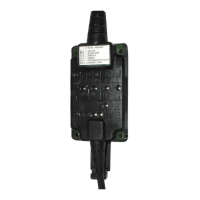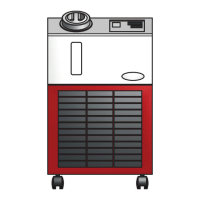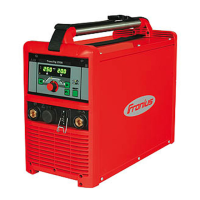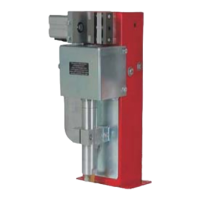Before leaving the workplace, ensure that people or property cannot come to any
harm in your absence.
Protecting
yourself and
others
Anyone working with the device exposes themselves to numerous risks, e.g.
-
flying sparks and hot pieces of metal
-
Arc radiation, which can damage eyes and skin
-
Hazardous electromagnetic fields, which can endanger the lives of those
using cardiac pacemakers
-
Risk of electrocution from mains current and welding current
-
Greater noise pollution
-
Harmful welding fumes and gases
Suitable protective clothing must be worn when working with the device. The
protective clothing must have the following properties:
-
Flame-resistant
-
Insulating and dry
-
Covers the whole body, is undamaged and in good condition
-
Safety helmet
-
Trousers with no turn-ups
Protective clothing refers to a variety of different items. Operators should:
-
Protect eyes and face from UV rays, heat and sparks using a protective visor
and regulation filter
-
Wear regulation protective goggles with side protection behind the protecti-
ve visor
-
Wear stout footwear that provides insulation even in wet conditions
-
Protect the hands with suitable gloves (electrically insulated and providing
protection against heat)
-
Wear ear protection to reduce the harmful effects of noise and to prevent in-
jury
Keep all persons, especially children, out of the working area while any devices
are in operation or welding is in progress. If, however, there are people in the
vicinity:
-
Make them aware of all the dangers (risk of dazzling by the arc, injury from
flying sparks, harmful welding fumes, noise, possible risks from mains cur-
rent and welding current, etc.)
-
Provide suitable protective equipment
-
Alternatively, erect suitable safety screens/curtains.
Risks from mains
current and wel-
ding current
An electric shock is potentially life threatening and can be fatal.
Do not touch live parts either inside or outside the device.
During MIG/MAG welding and TIG welding, the welding wire, the wirespool, the
feed rollers and all pieces of metal that are in contact with the welding wire are
live.
Always set the wirefeeder up on a sufficiently insulated surface or use a suitable,
insulated wirefeeder holder.
Make sure that you and others are protected with an adequately insulated, dry
base or cover for the earth or ground potential. This base or cover must extend
over the entire area between the body and the earth or ground potential.
All cables and leads must be secured, undamaged, insulated and adequately di-
mensioned. Replace loose connections and scorched, damaged, or inadequately
dimensioned cables and leads immediately.
Use the handle to ensure the power connections are tight before every use.
38
